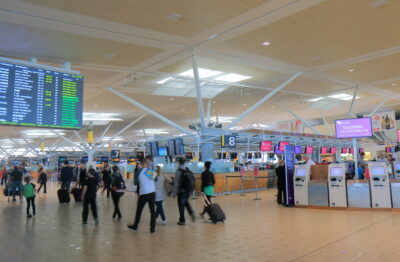Australian property and retail markets stay resilient
The industrial sector thrives, retail faces challenges, and office and healthcare show promise despite higher interest rates

The commercial property markets in Australia have remained resilient despite higher interest rates impacting demand. Elite Agent, an online newsletter, noted how the industrial sector has shown strength with low vacancy rates leading to significant rent growth, preserving valuations. Investors are being selective in their choices due to tightening capital markets.
The retail sector, on the other hand, is expected to face challenges in 2023, although shopping centre vacancy rates have been decreasing. The office sector has seen positive demand in Melbourne, Brisbane, and Perth, while Sydney experienced a contraction. Flight to quality remains a significant factor in the office market. Healthcare has seen an increase in private health insurance uptake and progress in addressing rising costs and staffing levels.
Australian retail sales in February, as discussed by Reuters, rose by only 0.2 percent, compared to a 1.8 percent increase in January, indicating that consumers are curbing their spending due to higher living costs and rising interest rates. The figure exceeded expectations but confirmed a slowdown in consumer purchases, particularly in discretionary spending categories such as department stores, clothing, footwear, and personal accessories.
Related: In the heart of Melbourne, a fertile ground for home
Economists anticipate further moderation in consumer spending in the coming months as the impact of higher interest rates intensifies and real wages growth remains negative. The Reserve Bank of Australia (RBA) may pause its rate increases, depending on future data, with the possibility of a rate hike in May after the release of first-quarter inflation data.
The retail industry provides a platform for selling goods and services to end users, contributing to economic development. Commercial Property 2 Sell reported that, despite the impact of e-commerce and the pandemic, the retail sector remains strong in Australia. Sales are expected to return to pre-pandemic levels in 2023, and well-maintained retail properties are in demand. Retail businesses are adopting technology and automation, focusing on customer experience and safety.
The retail real estate market faced challenges in 2020-2021 but has improved since mid-2022. Brick-and-mortar stores have seen a resurgence as customers return, although inflation and rising costs impact consumer spending. Future trends include enhanced in-store experiences, repurposing stores, flexible lease models, and the growth of mixed-use commercial spaces. Regional and neighbourhood shopping centres continue to perform well, shaping the future of the industry.
The Property Report editors wrote this article. For more information, email: [email protected].
Recommended
Why everyone is moving to Selangor and Johor: Malaysia’s real estate comeback
Malaysia’s upturn in fortunes is especially prevalent in secondary destinations such as Selangor and Johor
Penang’s silicon boom: How the US-China tech war is supercharging local real estate
Penang’s booming semiconductor industry has created ripples within the local real estate sector
New leader, new opportunities: How Hun Manet is shaking up Cambodia’s real estate game
Hun Manet is overseeing decent economic growth and widening access to the country’s real estate market for foreigners
Singapore embraces inclusive housing reforms amid resilient demand
The Lion City’s regulatory strength continues to exert appeal for international investors








